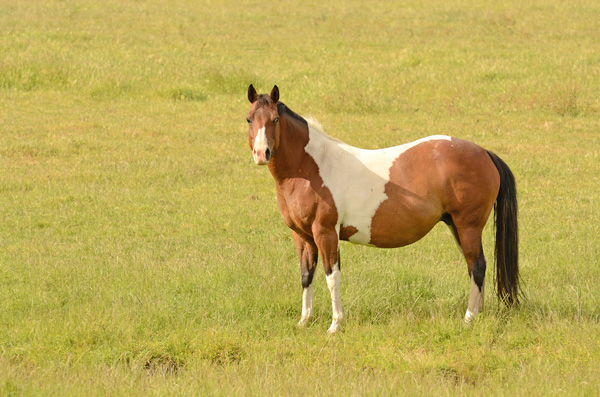
The following article on foal milk replacer is by Michele L. Frazer, DVM, DACVIM, DACVECC (equine critical care), is brought to you by our friends at Hagyard Equine Medical Institute just outside of Lexington, Kentucky, and almost across from the Kentucky Horse Park.
The ideal source of nutrition for a foal is, of course, mare’s milk. However, situations sometimes occur that prevent a foal from getting adequate nutrition from the mare. The mare may not produce enough milk to meet the foal’s nutritional requirements, so the foal requires supplementation for several days while the mare’s milk production hopefully increases.
If a mare tests positive for A or Q antibodies in her blood prior to foaling, her foal is at risk for developing neonatal isoerythrolysis (NI) if the foal ingests the mare’s colostrum. These foals require supplementation until the mare’s colostrum transitions to milk.
Also, the mare may be sick or injured, reject the foal or even die. Foals from these mares require long-term supplementation unless a nurse mare is obtained. Short-term supplementation may still be required while waiting for the nurse mare to arrive. Also, someone may attempt to raise the foal from a nurse mare and need a source of long-term supplementation.
Antibodies do not cross the equine placenta to the foal’s bloodstream, so foals are born without any immune protection. Therefore, foals must receive colostrum within the first 12 to 18 hours of life to have antibody protection against disease. Some farms and clinics have colostrum banks where they store frozen colostrum from other mares. This ensures that colostrum is always available if a new foaling mare does not have colostrum or if she dies.
Before freezing and storing colostrum, a sample should be submitted to a laboratory for testing. The IgG level should be greater than 4000 mg/dL and the colostrum should be negative for A, Q and C antibodies. Foals should receive at least one to two pints of colostrum divided over several feedings. If colostrum is not available, plasma transfusions may also be used. If a foal is older than 18 to 24 hours and still needs antibodies, plasma is the best option since colostrum may no longer be absorbed from the foal’s gastrointestinal tract.
At about one day of age, the foal should have a blood IgG level checked by a veterinarian. Ideal levels range between 400 and 1200 mg/dL, depending on individual farm situation and veterinarian preference. Typically an IgG level greater than 800 mg/dL is desired.
Several options are available to provide nutritional supplementation to foals. Our clinic uses Mare’s Match made by Land O Lakes.
This product comes in powder form and can be reconstituted with tap water and mixed in a blender. Unused portions can be stored in the refrigerator for up to 12 to 24 hours after reconstitution. Refrigerated portions should be warmed prior to feeding. The composition of Mare’s Match is similar to mare’s milk, with 24% protein and 16% fat.
Other commercial products available include Grow-N-Glow made by Merrick, Mare’s Milk Plus made by Buckeye, or Foal’s First Milk Replacer Powder by Progressive Nutrition.
Cow’s milk is not an ideal supplement for the foal except in the emergency situation because the fat and protein content are significantly different from that of the mare.
Young foals should be fed about 25% of their body weight every 24 hours. This should be divided into at least eight feedings and ideally 12 feedings throughout the day and night.
When feeding a newborn foal, begin with 10-15% of body weight the first day and gradually increase the amount over several days until feeding 25% of body weight. If the foal is also nursing from the mare, determining the amount of milk supplementation to provide can be difficult. Muzzling the foal for one hour and hand milking the mare and measuring the amount can be done to determine how much milk the foal is getting from the mare. Mares typically have greater milk release when the foal nurses as compared to when a human hand milks the udder. However, this method still provides an approximation of milk production and helps in determining how much milk replacer to provide.
Milk replacer can be given to the foal by pan or bucket, through a nasogastric tube or with a bottle. Many foals can learn to drink milk replacer from a pan or bucket, which makes this method convenient and safe. Most foals will still retain the ability and desire to suckle, so they can be placed on a nurse mare even after pan feeding for several days.
Bottles can be dangerous because the foal may aspirate milk into the lungs and develop pneumonia. Nasogastric tubes are a good way to provide nutrition to a foal that is weak and does not have a suckle reflex or to a foal that has not learned to pan feed. However, indwelling feeding tubes are only used on a short-term basis and should be removed as soon as possible.
Feeding a foal can be a challenging and time-consuming venture. However, with knowledge and preparation, foals can be successfully raised with milk replacer.


